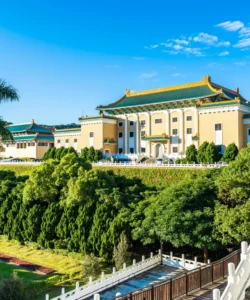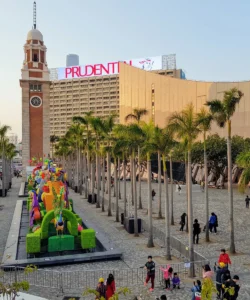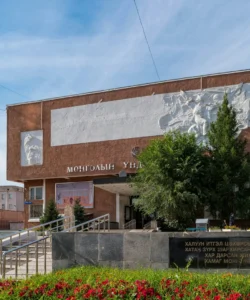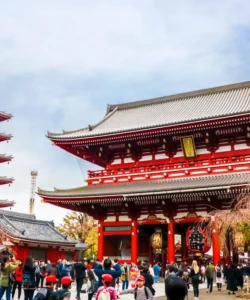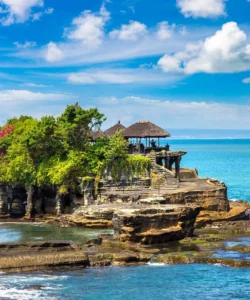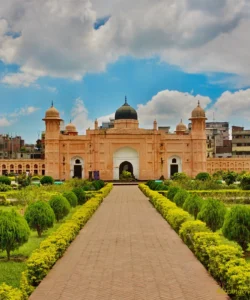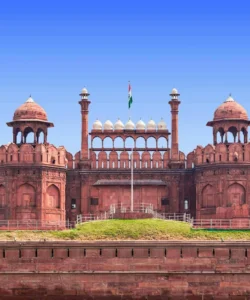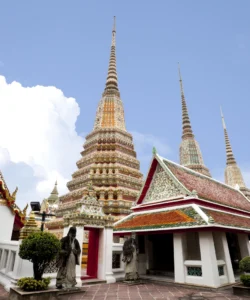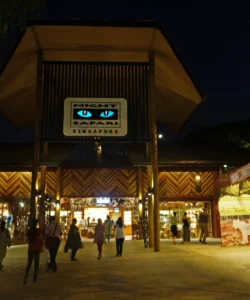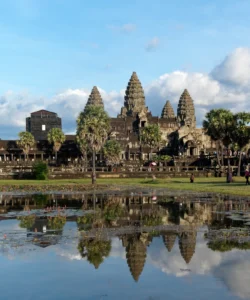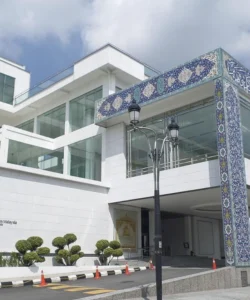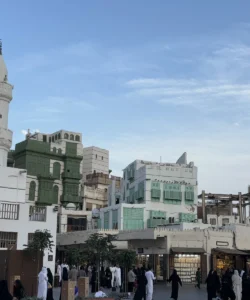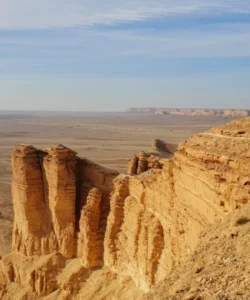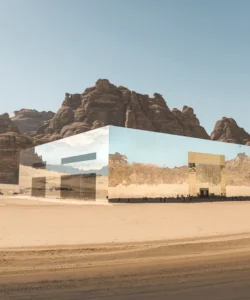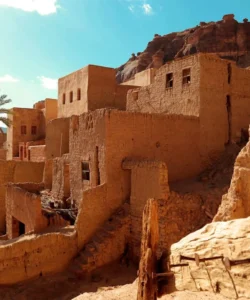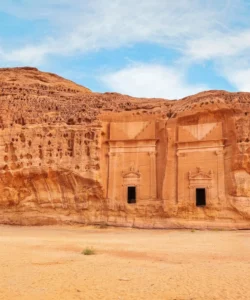Hegra, also known as Mada’in Salih (Arabic: مَدَائِن صَالِح, lit. ‘Cities of Salih’), is a monumental archaeological site located in AlUla within the Medina Province of Saudi Arabia. It is the largest conserved site of the Nabataean civilization south of Petra in Jordan and holds the distinction of being Saudi Arabia’s first UNESCO World Heritage Site.
Name: Hegra (Ancient Greek: Ἕγρα, Arabic: ٱلْحِجْر, al-Ḥijr; also Mada’in Salih, but the official tourism board prefers “Hegra”)
Address: AlUla 43512, Medina Province, Saudi Arabia. It is situated approximately 20 kilometers (12 miles) north of the modern town of AlUla, in an arid desert environment.
How to Get There:
Access to Hegra is highly controlled to preserve the site, and self-driving into the archaeological zone is not allowed. All visits are conducted via organized tours.
- By Air to AlUla (ULH): The easiest way is to fly directly into AlUla International Airport (ULH). Saudia and Flynas operate direct domestic flights from other cities in Saudi Arabia (such as Riyadh, Jeddah, Dammam), and FlyDubai connects from Dubai. The airport is about a 30-minute drive southwest of AlUla town.
- By Road to AlUla:
- From Riyadh: Approximately 1100 km (13.5 hours by bus, or 3 hours by plane).
- From Jeddah: Approximately 8 hours drive along the Red Sea coast to Yanbu, then inland to AlUla.
- From Medina: A shorter journey, about 350 km (4 hours) directly by road.
- Renting a car in Saudi Arabia (e.g., from Jeddah or Riyadh) and driving to AlUla is an excellent option, as it allows for exploration of the wider AlUla region.
- From AlUla to Hegra:
- Organized Tours (Mandatory): The only way to access Hegra itself is through pre-booked, organized tours provided by “Experience AlUla,” the official tourism body. These tours typically start from Winter Park (a central visitor area in AlUla) or directly from the Hegra Visitor Centre.
- Tour Options: Tours are usually conducted by air-conditioned coach or vintage Land Rover, last approximately 2 hours, and include stops at major tombs with guided insights from local experts.
- Advance Booking: Advance booking is highly recommended, especially during the high season (October–April).
- Best Time to Visit: The cooler months from October to April are ideal. Arriving early in the morning can offer softer lighting for photography and cooler temperatures.
Landscape and Architecture:
Hegra’s “architecture” is a spectacular display of rock-cut monuments, ingeniously carved by the Nabataeans directly into sandstone outcrops within an arid desert landscape.
- Dramatic Sandstone Outcrops: The site is characterized by numerous colossal sandstone massifs and rocky outcrops that rise abruptly from the flat desert plains. These rock formations, sculpted by millennia of wind and water erosion, served as the raw material and canvas for the Nabataean architects.
- Monumental Rock-Cut Tombs: The most famous and defining architectural features are the 111 monumental tombs (94 of which are decorated) carved directly into the sandstone cliffs. These elaborate facades date primarily from the 1st century BCE to the 1st century CE.
- Façade Decoration: The tomb facades showcase a blend of architectural influences, including Assyrian, Egyptian, Phoenician, Hellenistic (Greek), and Roman elements, fused with a distinct Nabataean style. Common decorative motifs include crowned columns, triangular pediments above doorways, broad architraves, various types of “crow-steps” (stepped gable motifs) at the top, and intricate carvings of sphinxes, eagles, griffins, and Medusa-like masks guarding the entrances.
- Inscriptions: Many tombs bear inscriptions in Nabataean Aramaic, providing valuable information about the tomb owners (often wealthy merchants, high-ranking individuals, and noble families), their professions, and the construction dates. These inscriptions also include warnings of fines or divine punishment for disturbing the tombs.
- Qasr al-Farid (The Lonely Castle): The most iconic and photographed tomb at Hegra. It stands majestically isolated from other tomb clusters on a solitary rock outcrop. It is notable for being beautifully carved but unfinished at its base, revealing the Nabataeans’ top-down carving technique.
- Al Diwan (Ceremonial Hall): One of the few examples of non-funerary rock-cut architecture. This large, rectangular ceremonial hall is carved deep into a hillside, believed to have been used for sacred festivals, banquets, or official meetings. Niches for Nabataean deities are found nearby.
- Jabal Ithlib: A significant religious area to the east of the city, featuring a natural fissure (Siq) in the rock, and rock-cut sanctuaries, ritual markers, and meeting places.
- Hydraulic Engineering (Wells): Hegra demonstrates the Nabataeans’ mastery of hydraulic engineering. The site features a complex system of more than 130 wells (most of which were sunk into the rock) and stone-lined water channels, which enabled oasis agriculture and sustained the city in an arid environment. Many of these wells are still in use today.
- Desert Environment: The overall landscape is arid, with scrub-speckled desert plains, creating a stark and beautiful contrast with the monumental rock formations. The dry climate and the lack of resettlement after abandonment have contributed to the extraordinary state of preservation.
- Ottoman Fortifications: Remnants of Ottoman-era forts and railway stations from the early 20th-century Hejaz Railway (built to connect Damascus with Medina) are also present, representing a later layer of history.
What Makes It Famous:
- Saudi Arabia’s First UNESCO World Heritage Site: Hegra was the first site in Saudi Arabia to be inscribed on the UNESCO World Heritage List in 2008, recognizing its outstanding universal value.
- Largest Conserved Nabataean Site South of Petra: It is the most significant and best-preserved remnant of the Nabataean civilization in the southern part of their influence, second only to their capital city, Petra, in Jordan.
- Monumental Rock-Cut Tombs: Its hundreds of elaborate tombs, intricately carved into the sandstone cliffs, are a testament to the Nabataeans’ exceptional architectural and artistic skill, making it a unique “necropolis” (city of the dead).
- Crossroads of Ancient Civilizations: Hegra served as a crucial staging post and a major trading city along the ancient Incense Road and other caravan routes, connecting the Arabian Peninsula with the Mediterranean, Egypt, and Asia. It facilitated trade in frankincense, myrrh, spices, and textiles, highlighting its strategic importance and cultural fusion.
- Mysterious and “Recently Opened”: For decades, Hegra (then known as Mada’in Salih) was largely inaccessible to international tourists. Its relatively recent opening to the public (starting in late 2019) has made it a particularly intriguing and exciting destination, often feeling like a place of new discovery.
- Qasr al-Farid: This iconic, solitary, and unfinished tomb is the “poster child” of Hegra, famous for its dramatic appearance and unique position.
- Extraordinary State of Preservation: The arid climate, lack of subsequent resettlement, and local beliefs surrounding the site have contributed to the remarkable state of preservation of its tombs and inscriptions, offering an extensive window into Nabataean life.
- Qur’anic Mention (Thamud): The site has religious significance for Muslims as it is mentioned in the Holy Qur’an (Al-Hijr) as the dwelling place of the ancient Thamud people, who also carved homes into mountains.
Differences from Some Other Wonders:
- Nabataean Civilization (Second City): While Petra in Jordan is the more famous Nabataean capital, Hegra is its “sister city” and second-largest Nabataean settlement, offering a similar, yet distinct, experience of their rock-cut architecture. It provides crucial complementary insights into this mysterious civilization.
- Focus on Tombs and Necropolis (Predominantly): Like Petra, Hegra is primarily famous for its extensive necropolis (city of tombs), with the majority of well-preserved structures being monumental funerary facades carved into rock. While traces of a residential city exist, the tombs are the dominant feature, similar to Petra but perhaps with better preservation of the facades in some cases due to the more durable sandstone.
- Desert Landscape and Dispersed Tombs: While Petra is characterized by its dramatic Siq (narrow gorge) and the close-knit, deep red sandstone cliffs, Hegra is marked by its vast, open desert landscape with numerous large, isolated sandstone outcrops, where tombs are often more dispersed, allowing for wider views and a different sense of scale.
- Controlled Tour Access: Unlike Petra, which allows for independent exploration (once inside), Hegra currently requires visitors to join organized, guided tours for all access within the archaeological zone. This strict control is unique and aims to protect the fragile site.
- Less Extensive Carved Facades than Petra: While impressive, Hegra has 111 monumental tombs compared to Petra’s more than 600. However, Hegra’s tombs are often in a better state of preservation, and their carvings are noted for being more varied and eclectic due to influences from the earlier Dadanite and Lihyanite people who lived in AlUla.
- Lack of Prominent Treasury-like Icon: Hegra does not have a single, overwhelmingly famous, highly detailed structure like Petra’s iconic “Treasury” (Al-Khazneh) that immediately defines the site. Its wonder is more about the collective experience of its numerous, scattered, grand tombs and the landscape.
- Hydraulic Mastery in Arid Environment: The extensive, well-preserved system of wells demonstrates the Nabataeans’ remarkable hydraulic expertise in a desert environment, which was vital for their trade and settlement in a way that is profoundly practical and sets it apart.
- Specific Islamic Scriptural Mention: Its direct mention in the Holy Qur’an as the home of the Thamud people adds a specific layer of Islamic religious and historical significance.
Hegra Photos:































